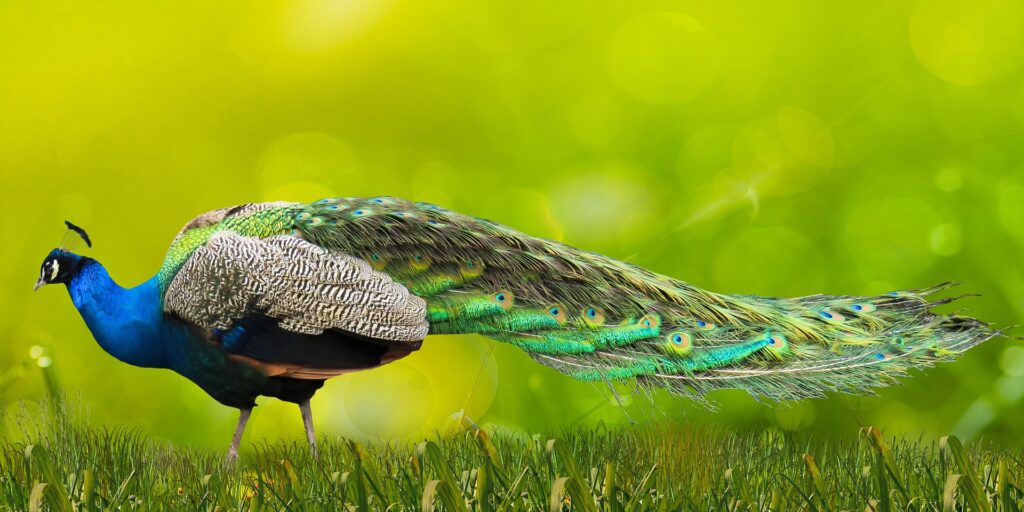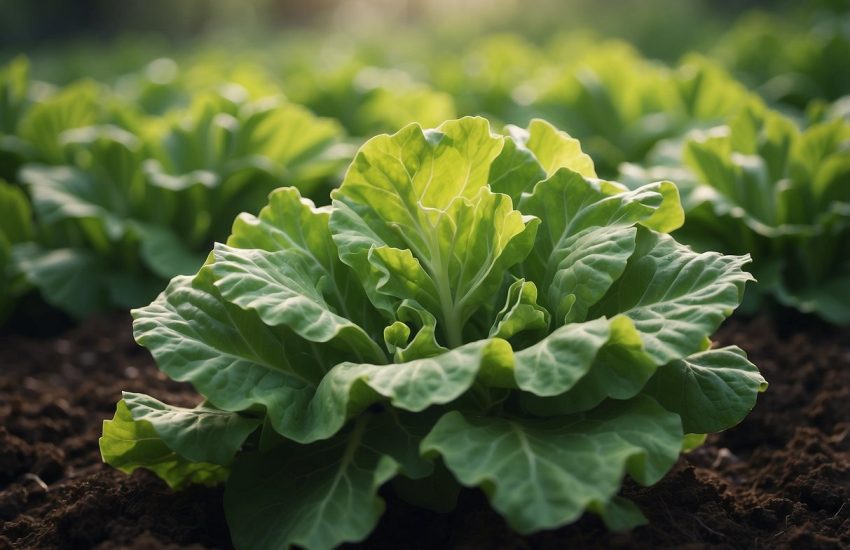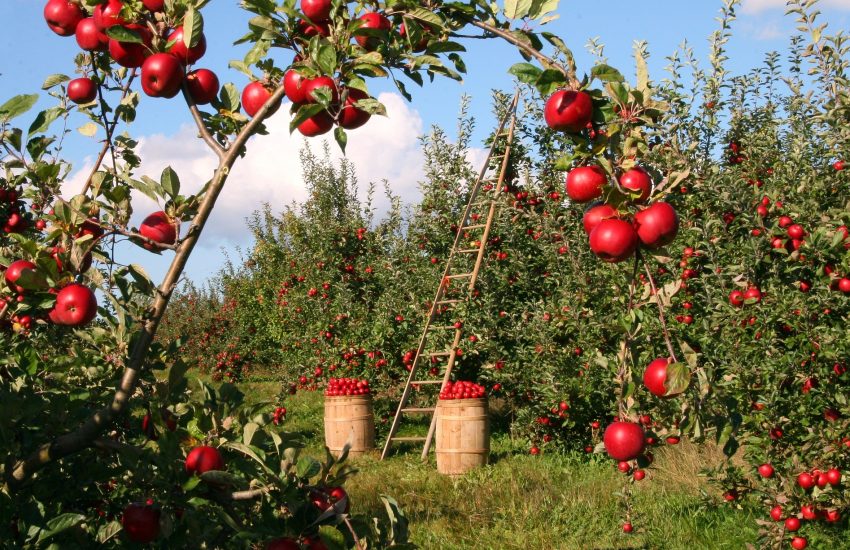Peacock Farming: Complete Guide to Start
Peacock is not a mere bird but one of the most beautiful creatures on planet Earth. Its beautiful metallic blue-green feathers with ‘eye’ marking, are the most distinctive and attractive feature of the bird. The male peafowl is known as ‘peacocks’, whereas females are referred to as ‘peahens’ and altogether they are popularly called “peacocks”.
Peacocks have been of great importance in Indian culture and tradition. The truth lies in the fact that Hindu God Krishna is believed to wear a Peacock feather in his crown as depicted in Bhagavad Gita. And another example is that the Hindu god Kartikeya is depicted using a peacock as his ride in Hindu scriptures and religious books. The peacocks are said to be the natives of the Indian Subcontinent. Thus, the Indian or the blue Peacock is also India’s National Bird.
And now, the question is, what do you visualize when you hear the word “peacock”? I know, definitely a beautiful and long blue-green feathered bird dancing in the rain. But have you ever heard that Peacock farming is actually a not-so-popular business idea taken up by farmers a long time ago? If not, so let’s learn about peacock farming and how it helps farmers earn their living.

What is Peacock Farming? And its Advantages?
Peacock Farming refers to the practice of raising and rearing peacocks by farmers. The scientific name for peacocks is Pavo cristatus commonly called Indian or Blue Peacocks and is said to the native to the Indian Subcontinent. It is similar to poultry farming, just like raising birds such as chickens, swans, turkeys, ducks, geese, etc.
In poultry farming, the birds are kept for the production of eggs and meat but the purpose of raising peacocks is their ethereal beauty, religious aspect, and valuable feathers that have high value in the market. Peacocks are also used as a beauty enhancer for farms and due to their social nature, they are also kept as pets. Thus, Peacock farming is a profitable business due to the high demand in the domestic and International markets.
Some of the many advantages of Peacock Farming are stated below-
- Peacock Farming is a great source of employment generation for rural people that could help them become independent economically.
- Unlike, other farming, the investment required to start peacock farming is less and management is also easy.
- Peacocks being beautiful birds, they are used to add aesthetic beauty to farms that make buyers attracted to the property.
- Watching peacocks dancing with their feathers open is a pleasant sight to watch. Thus, people love keeping peacocks as pets and that makes the business more profitable due to the high demand for this bird in the market.
- Apart from the wild, peacocks are kept in zoos and this increases the visitation of people to the zoo to watch this stunning creature.
- Not just the direct economic benefits, but peacocks are also farmer-friendly birds. Due to peacocks being omnivores, they feed on mice, frogs, ants, termites, small snakes, lizards, etc. Thus, they keep checking on the insect population which may harm the nearby crops at different stages of crop production.
- Peacocks also help in seed dispersal which leads to the germination of more and more plants.
These all benefits of Peacock farming make it an economically profitable yet environment-friendly business.
See Also: African Daisy grow and care
Steps to start Peacock Farming for beginners
Before entering any business venture, one must know the basics of the particular business. It all starts with knowing about the bird, its nature, breeds, behavior, housing, breeding season, and feeding patterns. Also, you need to be aware of its demand in the market and the current marketing trends, for your business to prosper.
Selection of Site and Location
Start with finding a suitable location for your farm. Ensure that the farm has good infrastructure, electricity, water supply, drainage, and transportation system with proper road facilities that keep the site connected to other areas and the market. And in case, you want to start your business from your home, then that too requires enough space and all basic amenities to start the business.
Suitable breed and their Behaviour
The first and the most common preference for the domestication of peacocks is the Indian or Blue peafowl. The Blue peafowls have said to be the natives of India and Sri Lanka. The characteristic of these peacocks makes them admired more by people. They are more social, enthusiastic, sincere, and easy to handle than the Green Peafowl which is aggressive and difficult to domesticate. It is noted that the bright, long-tailed feathers of peacocks appear after the second year of their lives. And are fully developed till they turn four.
Housing and Infrastructure
The house should be spacious enough for peacocks to live without stress and that shelter from, rain, wind, extreme heat, and cold. Usually, a peacock requires 80 to 100 square feet of living to stay healthy. The shelter or the nesting area should be properly fenced to protect peacocks from their predators that may cause harm to them. Proper drainage facilities should be provided in the shelter so that excess water does not get collected which may thereafter, lead to various diseases in peacocks.
Feeding Habits
Peacocks are Omnivores. They eat grains and small animals like insects, small snakes, lizards, mice, and others. Insects are a major part of their diet. It includes- termites, centipedes, millipedes, ants, grasshoppers, etc. Their feed must include enough protein for them to live and reproduce healthily. A poultry feed mix is a great option to feed your peacocks. Like other birds, peacocks don’t drink much water.
Breeding Habits
The breeding season of peacocks is not exactly fixed but they prefer breeding during the rainy season. The beautiful dance, displaying stunning feathers, you get to see during the rainy season is actually a part of breeding in peacocks. The male peafowls call out and dance to attract the female for breeding yet the peahens are the pickiest to choose a partner to breed. They prefer the bigger, more beautiful, and healthy male. From the period of March to August the peahens will lay eggs every other day in clutches after mating and normally lays for 6 to 10 days.
Sanitation and cleanliness of the farm
Sanitation of the nest and the shelter is a must. Proper cleanliness and sanitation keep a lot of diseases at bay. Parasitic infection is the most common disease that occurs in peacocks due to a lack of sanitation and cleanliness. Properly cleaning and sanitizing the area is important in order to keep the place hygienic and disease free for peacocks.
Disease and Pests of Peacocks
Protecting peacocks from disease and pests is an important task. There are many diseases that cannot be treated once transmitted to the peacocks such as New Castle disease or fowl pox. It is a dreadful disease that causes the most mortality in birds. Bacteria, fungi, viruses, and other parasites could cause various diseases in peacocks such as fowl typhoid, pullorum, Arizona, etc. Peacocks are prone to pests like mites or lice and worms also.
Proper Knowledge of the Market
You must be aware of the value of your peacocks in the market. Unless you have a better reach and targeted public for your goods, it’s useless to think your business be a success. Know the domestic and International worth of your birds. Be it, the price and demand of the feathers of the peacock or the bird itself. You must be connected to the market through all means. Always be in touch with the latest advertising and marketing trends of your business.
Disadvantages of Peacock Farming
Some downsides of Peacock Farming include
- Peafowls being the natives of the Indian Subcontinent are acclimatized to the hot and humid climate. Though they are adjusting to the climate in countries like the US, still its care and maintenance become a little difficult and high cost.
- During the breeding season, peacocks tend to call out females for breeding. Thus, they become a lot of noise.
- Peacocks are large birds. Handling them can become a little hard and at times they can be destructive and can damage the farm.
- Their diet includes lots and lots of protein, therefore their feed becomes a little expensive.
- The peafowls are said to be competitive in nature and this makes them incompatible sometimes.
- Apart from the above reason, the most important amongst all is the fact that peacocks have beautiful long tail feathers that are in demand in domestic as well as International markets. Thus, the bird will be on verge of being tormented for their feathers on farms as well as in wild if the peacock farming becomes more popular.
Is Peacock Farming legal in India?
In many countries such as the UK, the US, Canada, Australia, etc. peacock Farming is legal. Farmers could domesticate peacocks and they can also be kept as ‘pets’ under certain regulations. But, in India, domesticating or taming peacocks is illegal. Peacock is the National Bird of India, and they are also in Schedule I species in Wildlife (Protection) Act.
Thus, keeping it as a ‘pet’, domesticating and hunting of peacocks in India is prohibited and the export of their tail feathers is banned in India. But the selling of feathers shed by peacocks naturally is legal within the country. But loophole also gives rise to the crimes happening against peacocks in India.
Conclusion
Peacock is a beautifully stunning creature that depicts love, beauty, passion, freedom, confidence, and strength. It has been associated with humans for centuries. Peacock farming may not be so popular these days, but it is a source of income generation for many families. Domesticating peacocks comes with several advantages including economic value and environmental benefits.
Peacocks are known as friends of farmers for feeding on insects and pests that might destroy the crop and lead to reduced crop production. And not to forget that they are also a great source of seed dispersal that helps in increased germination of plants. Countries that allow Peacock Farming should also enforce strict laws for their care and maintenance so that this beautiful creature is safe and sound forever.


